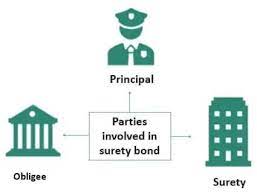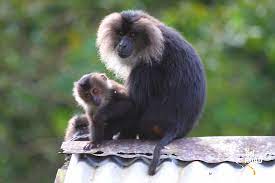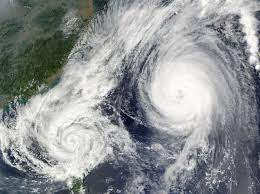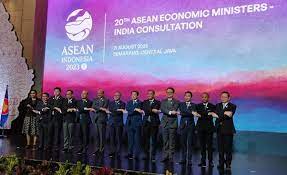Today’s Current Affairs: 26th aug 2023 for UPSC IAS exams, State PSC exams, SSC CGL, State SSC, RRB, Railways, Banking Exam & IBPS, etc
Table of Contents
Insurance Surety Bonds:

The National Highways Authority of India (NHAI) organised a brainstorming session with stakeholders to expedite the adoption of Insurance Surety Bonds for its contracts.
- Insurance Surety Bonds can be defined in their simplest form as a written agreement to guarantee compliance, payment, or performance of an act.
- These are instruments where insurance companies act as ‘Surety’ and provide the financial guarantee that the contractor will fulfil its obligation as per the agreed terms.
- Surety is a unique type of insurance because it involves a three-party agreement.
- The three parties in a surety agreement are:
- Principal: The party that purchases the bond and undertakes an obligation to perform an act as promised.
- Surety: The insurance company or surety company that guarantees the obligation will be performed. If the principal fails to perform the act as promised, the surety is contractually liable for losses sustained.
- Obligee: The party who requires and often receives the benefit of the surety bond. For most surety bonds, the obligee is a local, state or federal government organisation.
- It will act as a security arrangement for infrastructure projects and will insulate the contractor as well as the principal.
- The product will cater to the requirements of a diversified group of contractors, many of whom are operating in today’s increasingly volatile environment.
Lion-Tailed Macaque : Spotted

Lion-tailed macaque has been sporadically spotted by conservationists in the forests of Nadugani, shared by the Nilgiris district in Tamil Nadu and Nilambur in Kerala.
- Lion-tailed macaqueis an Old World monkey.
- One of the distinguishing features of this species is that males define the boundaries of their home ranges by calls.
- Overall, their communication system contains as many as 17 vocalisations.
- They are characterised by the grey mane around their face.
- They are sometimes called bearded monkeys.
- The magnificent Lion-tailed macaque is named due to its lion-like, long, thin, and tufted tail.
- In the wild, these are only native to India.
- It is a primate endemic to small and severely fragmented rainforests of the Western Ghats in Karnataka, Kerala and Tamil Nadu.
- The biggest threat to the overall population of this species is the destruction of their rainforest habitat.
- Conservation status
- IUCN: Endangered
- CITES: Appendix I
- The Wildlife (Protection) Act, 1972: Schedule I
Geospatial Artificial Intelligence : ISRO

ISRO chair professor at the National Institute of Advanced Studies (NIAS), Bengaluru, informed that NIAS has launched a pilot project involving geospatial artificial intelligence (GeoAI) and random forest technology to monitor and predict the city’s air quality.
- Geospatial Artificial Intelligence is the application of artificial intelligence (AI) fused with geospatial data, science, and technology.
- It accelerates real-world understanding of business opportunities, environmental impacts, and operational risks.
- It is transforming the speed at which we extract meaning from complex datasets, thereby aiding us in addressing the earth’s most pressing challenges.
- With the help of simple smartphone applications, people can give real-time feedback about the conditions in their surroundings, for example, traffic congestion, the details of it, the peak hours, their experience, and their rating: low, moderate, or dense.
- The data is then collated, sorted, and analysed, enhancing its accuracy and precision because thousands of users contribute to the database.
Zika Virus : Mumbai Reported First Case

Mumbai has recently reported the first case of Zika Virus, confirmed by the Brihanmumbai Municipal Corporation (BMC).
- Zika Virus is a mosquito-borne virus that was first identified in the Zika Forest of Uganda in 1947.
- It is primarily transmitted to humans through the bite of infected Aedes mosquitoes, particularly Aedes aegypti and Aedes albopictus.
- It can also spread through sexual contact, blood transfusion, and from an infected mother to her baby during pregnancy or childbirth.
- Many people infected with this virus do not experience any symptoms (asymptomatic).
- When symptoms do occur, they are often mild and include fever, rash, joint pain, muscle pain, headache, and red eyes (conjunctivitis).
- Symptoms typically appear two to seven days after being bitten by an infected mosquito and can last several days to a week.
- This virus infection is usually mild, but it can have severe consequences for pregnant women and their babies.
- Infection during pregnancy can lead to birth defects such as microcephaly and other neurological disorders in the baby.
- It has also been linked to Guillain-Barré syndrome, a rare autoimmune disorder that can lead to muscle weakness and paralysis.
Fujiwhara Effect:

Powerful winds tormented the Bay Area and other parts of Central and Southern California, uprooting trees and disrupting the power supply due to the Fujiwhara effect.
- Fujiwhara effect was identified by a Japanese meteorologist, Sakuhei Fujiwhara.
- It was observed for the first time over the western Pacific Ocean when typhoons Marie and Kathy merged in 1964.
- When two hurricanes (or cyclones), spinning in the same direction, are brought close together, they begin ‘an intense dance around their common centre’ – this interaction between two cyclones is called the Fujiwhara effect.
- It Occurs If one hurricane’s intensity overpowers the other, then the smaller one will orbit it and eventually crash into its vortex to be absorbed.
- On the other hand, if two storms of similar strengths pass by each other, they may gravitate towards each other until they reach a common centre and merge or merely spin each other around for a while before shooting off on their own paths.
- The two ‘dancing’ cyclones, if they are intense enough, may merge with one another, leading to the formation of a mega cyclone capable of wreaking havoc along coastlines.
Khanan Prahari App:

The mobile app Khanan Prahari is a significant step taken by the Ministry of Coal towards curbing illegal coal mining activities.
- Khanan Prahari App allows citizens to report incidents of illegal coal mining through geo-tagged photographs and textual information.
- The corresponding web portal, called as Coal Mine Surveillance & Management System (CMSMS), has been developed in association with the Bhaskaracharya Institute of Space Application & Geoinformatics, Gandhinagar, and CMPDI, Ranchi.
- Objective is to encourage public participation through reporting about illegal coal mining.
- The government aims to take transparent action against illegal mining, using space technology as an e-governance initiative.
- Users can easily report incidents of illegal mining by taking photographs and providing comments on the incident. The app allows for the geotagging of photographs by enabling the GPS location feature.
- The user’s identity is kept confidential, ensuring privacy and security.
- Complainants receive a complaint number, which they can use to easily track the status of their reported complaints on the Khanan Prahari mobile app.
- This is available for download on Google’s Play Store for Android-based mobile phones and the Apple Store for iOS-supported iPhones.
Project AMBER:

The Ministry of Skill Development and Entrepreneurship (MSDE), in collaboration with Generation India Foundation (GIF) and Amazon Web Services India Private Limited (AWS India), is providing ‘cloud’ skills training to 1,500 under project AMBER.
- The Accelerated Mission for Better Employment and Retention (AMBER) project is a joint initiative of the National Skill Development Corporation (NSDC) – under the aegis of the Ministry of Skill Development and Entrepreneurship (MSDE) – and GIF to create the necessary avenues.
- The initiative has been undertaken under the SANKALP programme of MSDE with a focus on women to improve gender diversification in the tech industry and underprivileged groups.
- This project aims to train 30,000 youth, 50% of whom will be women.
- As part of this collaboration, the learners take part in AWS (re/Start), a workforce development program for unemployed and underemployed individuals.
- It covers fundamental AWS cloud skills as well as practical career tips, including resume writing and interview preparation.
- The program also covers the cost for learners to take the AWS Cloud Practitioner Certification exam, an industry-recognized credential that validates their cloud skills and knowledge and connects the participants with job interview opportunities in the cloud or IT with local employers.
Bharat New Car Assessment Programme:

The Ministry of Road Transport and Highways, Government of India, has introduced the Bharat New Car Assessment Programme (Bharat NCAP).
- This indigenous star-rating system aims to evaluate the safety of vehicles in the event of a collision, empowering consumers to make informed decisions while purchasing cars.
- This comprehensive program is set to come into effect from October 1, 2023, and will play a pivotal role in curbing the alarming number of road fatalities in India.
- Under the Bharat NCAP initiative, vehicles, particularly passenger cars, will be subjected to rigorous crash testing procedures, and based on their performance as per protocols laid down in the soon-to-be-published Automotive Industry Standard 197, they will be assigned a safety rating ranging from one to five stars.
- The programme is applicable to passenger vehicles with not more than eight seats in addition to the driver’s seat with gross vehicle weight not exceeding 3,500 kgs.
- The test procedure involves Frontal Offset Test, Side Impact Test and Pole-Side Impact Test.
- This rating will provide consumers with a clear indication of a vehicle’s safety standards in the event of a collision.
- Bharat NCAP is voluntary, encouraging manufacturers to nominate their vehicles for testing, thereby driving the production of safer cars in the Indian market.
20th ASEAN-India Economic Ministers Meeting:

The 20th ASEAN-India Economic Ministers’ meeting was held in Semarang, Indonesia, marking a significant step in enhancing economic cooperation between India and the ASEAN member countries.
Highlights of the Meeting:
- The meeting underscored the shared commitment to fortify the ASEAN-India Comprehensive Strategic Partnership, ensuring substantial benefits for both sides.
- The ministers highlighted the importance of fostering economic collaboration amid the challenges posed by the Pandemic.
- The bilateral trade between India and ASEAN in 2022-23 amounted to USD 131.5 billion, constituting 11.3% of India’s global trade for the same period.
- The ministers acknowledged AIBC’s endeavors throughout 2023, including the 5th ASEAN-India Business Summit held in Kuala Lumpur in March, 2023.
- AIBC is an organization formed by the Governments of ASEAN and India in 2005 with the aim to foster closer business linkages and provide an industry perspective to the broadening and deepening of economic linkages between ASEAN and India.
- Recognition was given to the concerns raised by businesses regarding Non-Tariff Barriers (NTBs), highlighting the growing exchanges and interactions among stakeholders from both sides.
- NTB refers to any obstacle or restriction that hinders international trade but does not involve the imposition of a direct tariff or customs duty on imported goods. Some examples of NTB are General or product-specific quotas, Quality conditions imposed by the importing country on the exporting countries, Unjustified Sanitary and Phyto-sanitary conditions etc.
- Amidst the intricate landscape of regional and global challenges, the ministers engaged in discussions about the multi-dimensional effects of the Covid-19 pandemic, climate change, financial market volatility, inflation, and geopolitical tensions.
- Key areas for cooperation were identified, such as robust Supply Chains, Food Security, energy security, health, and financial stability.
FIDE Chess World Cup 2023:

Magnus Carlsen of Norway beat India’s R. Praggnanandhaa in tie-breaks to win the title of the FIDE Chess World Cup 2023 held recently.
FIDE Chess World Cup 2023:-
- Venue: Baku, Azerbaijan.
- Date: from 29 July to 25 August,2023.
- Governing body: International Chess Federation (FIDE).
- FIDE Global Strategy Commission (hereinafter referred to as GSC) is in charge of preparing Regulations, communicating with the participants and the Organizer, and conducting inspections.
- The body responsible for adopting and changing these Regulations is the FIDE Council (upon GSC’s recommendations).
- Participation: 206 players shall take part in the World Cup.
- Prize: The prize money shall be paid by direct banker’s order drawn in USD.




